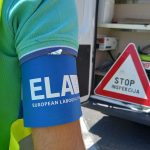The European Commission continues its efforts to further support greening of freight and reduce CO2 emissions from road transport. On 11 July a package of legislative measures has been published. The Commission puts forward proposals to optimize the use of rail transport, revise the Weights and Dimensions Directive as well as to establish common methodological approach for companies to calculate their greenhouse gas emissions. To complete its efforts the Commission is planning to revise the Combined Transport Directive in the coming weeks.
More efficient use of rail capacity
Rail is considered as an environmentally friendly mode of transport. According to the European Commission “in 2020, rail transport accounted for 5.1% of passenger transport between EU countries and 11.5% of freight transport between EU countries, but only 0.4% of greenhouse gas emissions from transport in the EU”. The Commission has put forward proposal for a Regulation on the use of railway infrastructure capacity in the single European railway area in order to optimise the use of rail transport, improve cross-border coordination, increase punctuality and reliability, and ultimately attract more freight companies to rail.
Revision of Weights and Dimensions Directive
In order to improve the uptake of zero-emission technologies, the Commission has put forward a proposal to revise Weights and Dimensions Directive, that regulates maximum weight length, width and height for heavy-duty vehicles. The Commission wants to allow additional weight for zero-emission vehicles, as they tend to increase a vehicle’s weight. According to the Commission “once the technology develops and and zero-emission propulsion systems become lighter, thanks also to the use of aerodynamic devices and cabs, cleaner vehicles will benefit from additional loading payload in comparison to conventional lorries “.
The Commission also wants to improve cross-border traffic of heavier and longer vehicles. Member States, who allow European Modular Systems in their territory, will also be able to allow them in international operations among neighboring Member States, without a need for a bilateral agreement and without a restriction of crossing only one border. This will mean the same amount of cargo can be carried in fewer trips. Administrative burdens such as language requirements, national specific marking and lighting requirements shall be lifted and procedures to issue permits for abnormal transport shall be further harmonized.
Combined transport will be also furthers supported. In cases, where goods are transported using two or more modes of transport but using a standardized cargo unit, the Commission wants to allow for lorries, trailers and semi-trailers to carry extra weight. Extra height will also facilitate the transport of high-cube containers by standard vehicles.
Common methodology to calculate greenhouse gas emissions of transport companies
The Commission is proposing a common methodological approach for companies to calculate their greenhouse gas emissions if they choose to publish this information, or if they are asked to share it for contractual reasons. The proposed methodology is based on the recently adopted ISO/CEN standard for the quantification and reporting of greenhouse gas emissions arising from the operation of transport chains of passengers and freight. Reliable data on door-to-door emissions will enable operators to benchmark their services and allow consumers to make informed choices on transport and delivery options.
Next steps
European Parliament and Council of the EU will start working on the proposals after the summer break. It is still difficult to foresee whether co-legislators will manage to finalise the legislative process before European Parliament elections, that will take place in May 2024. In case the deal is not reached, legislative work will be continued later next year.
















